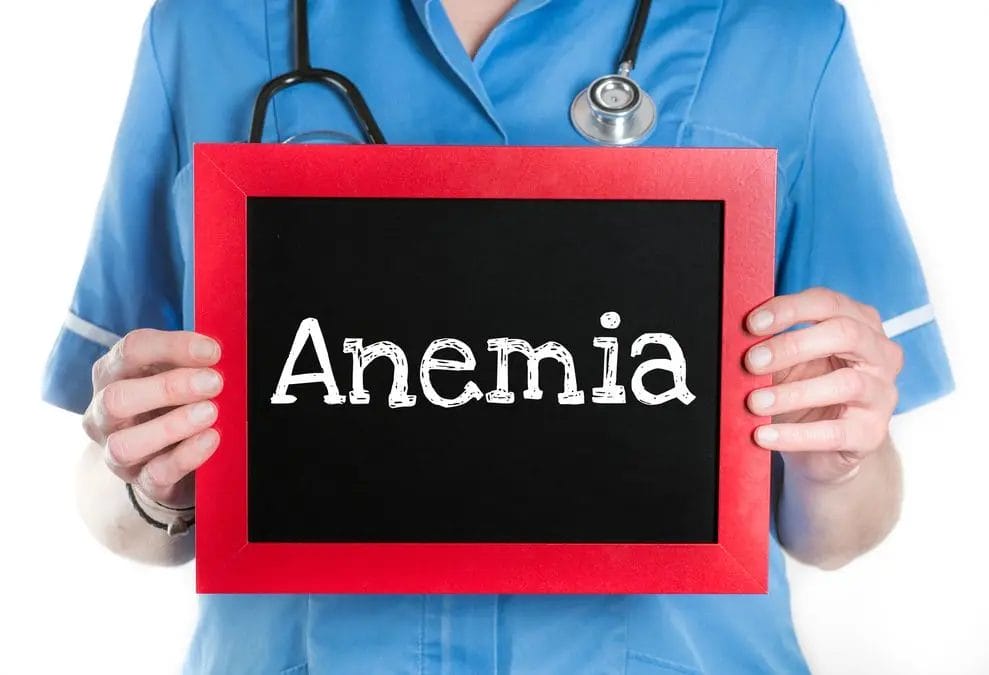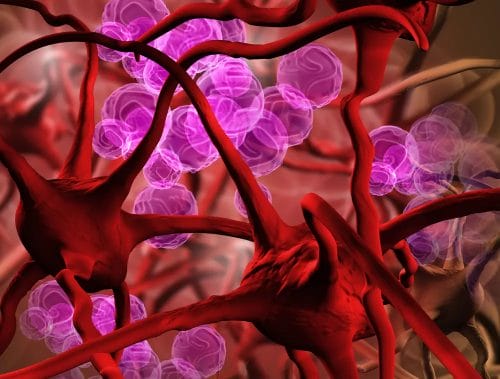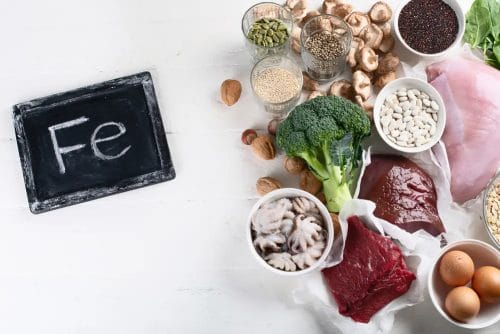
Anemia – symptoms, causes, types. How to prevent it and how to treat it?
Among the many blood diseases, anemia is certainly worthy of special attention, also known as anemia , manifested, among other things, by a significant decrease in the level of hemoglobin, red blood cells, or erythrocytes, and the so-called hematocrit index. Untreated anemia paves the way to other diseases, primarily progressive hypoxia, heart and circulatory system disorders, memory problems, and in extreme cases even death.
Contents
- 1 Hemoglobin – norms in the blood and its functions
- 2 Anemia – the most important symptoms of the disease
- 3 Anaemia – how it can be diagnosed
- 4 Anemia – the basic and most common causes
- 5 Anaemia – breakdown by haemoglobin level
- 6 Anemia – division due to deficiencies of other substances
- 7 Anemia – what to eat to avoid it
Hemoglobin – norms in the blood and its functions
Anemia is a disease directly affecting the reduction in the amount of hemoglobin in the blood, an important protein, without which there are serious disorders of the functioning of virtually the entire body. The main task of haemoglobin, found in red blood cells, is to transport oxygen from the lungs to all cells of our body and remove carbon dioxide from them, which is then exhaled through the lungs to the outside world.
Its importance cannot be underestimated and we should always take care to maintain its proper level, which, according to WHO, World Health Organization standards, is
- for adult men – 13-18 g/dl;
- for adult women – 12-16 g/dl;
- for pregnant women – 11-14 g/dl;
- for newborns – 17-22 g/dl;
- for older children, 11-13 g/dl.
These values are not unambiguous; they may change under the influence of various factors, including the accuracy of laboratory tests performed. Regardless, hemoglobin deficiency manifests itself in a characteristic way, leading precisely to the formation of anemia, or anemia, which we will characterize in a little more detail.
Anemia – the most important symptoms of the disease

Anemia, regardless of its type, gives a variety of symptoms, which, however, are not difficult to confuse with other diseases, and specialists point out, among others:
- a feeling of constant weakness and fatigue, lack of energy;
- increasing problems with sleep, even leading to insomnia;
- a characteristic paleness of the skin, lips, gums and eye conjunctivae;
- severe headaches and dizziness leading to fainting;
- brittleness, fragility and loss of hair due to dryness;
- shortness of breath in the chest;
- cold feet and hands;
- severe, painful leg cramps, joint and bone pain;
- palpitations and other cardiovascular problems;
- decreased concentration, often making it difficult to concentrate on even the simplest tasks;
- irritability and mood swings;
- weakened immunity, increased susceptibility to infections;
- reduced sex drive.
Anaemia – how it can be diagnosed
The multitude of symptoms of anemia can sometimes cause problems with its correct diagnosis, so it is diagnosed not only through a medical history, but primarily by ordering several basic diagnostic tests:
- blood test, which only a doctor can order, known as a morphology, commonly used not only in the diagnosis of anemia, allowing us to determine with great accuracy the number of erythrocytes (RCB), or red blood cells, their average size (MCV), the concentration of hemoglobin described above (MCHC), and the concentration of hematocrit (HCT), an indicator through which we know the percentage of erythrocytes in the blood;
- the ESR, or Biernacki’s test, an indicator of the so-called red blood cell count;
- the iron level, too low of which means anaemia;
- checking the level of ferritin, a protein responsible for binding iron atoms and their deposition in the body, here similarly, a low level indicates developing anemia. It is also worth paying attention to its excess, which in turn may indicate liver disease such as its hyperfunction or extremely painful rheumatoid arthritis;
- the amount of vitamin B12, cobalamin and vitamin B9, or folic acid, two vitamins without which it is impossible to produce red blood cells;
- determination of the rate of formation and breakdown of red blood cells;
- examination of stool for the presence of so-called occult blood.
Anemia – the basic and most common causes
Anemia is a condition caused by many different pathogens, and the most common causes of anemia, also emphasized by specialists in its treatment, are:
- inadequate levels of iron in the body;
- deficiencies of the above mentioned cobalamin and folic acid;
- improper diet, a restrictive diet that lacks many nutrients, vitamins and minerals;
- coexisting chronic, infectious or cancerous diseases;
- Viral, bacterial or fungal infections;
- parasites in various systems and organs of the body;
- chronic alcohol abuse;
- severe blood loss, e.g. as a result of an accident;
- nosebleeds and heavy menstruation;
- taking excessive doses of certain drugs, e.g. non-steroidal anti-inflammatory drugs;
- Heavy metal poisoning.
Anaemia – breakdown by haemoglobin level
There are many different criteria for div iding this dangerous and even life-threatening disease. The basic is its differentiation due to the severity of symptoms, which also results from the level of hemoglobin, and taking into account these factors, anemia can be divided into:
- mild, in the course of which the concentration of haemoglobin is between 10 and 12 g/dl;
- moderate, when the hemoglobin ranges from 8 to 9.9 g/dl;
- severe, caused by a drop in haemoglobin to between 6.5 and 7.9 g/dl
- very severe, which is directly life-threatening and the haemoglobin falls below 6.5 g/dl.
Anemia – division due to deficiencies of other substances
Of course, this is not the only division of anemia, as often used is the criterion of the so-called deficiencies of essential nutrients, vitamins and minerals. In this case, we can deal with different varieties of anemia, such as:
Anemia due to iron deficiency

Another name used for it is microcytic anemia, and the cause is too low levels of iron in the body. Iron is an element necessary to counteract many diseases, including anemia, responsible primarily for the construction and proper functioning of red blood cells and the synthesis of hemoglobin. Its deficiencies have an immediate negative impact on health and are caused by:
- high blood loss e.g. as a result of wounds, during surgery, with heavy menstruation or bleeding from the gastrointestinal tract or urinary tract e.g. with inflammation of the bladder, kidneys or glomeruli;
- abnormal iron absorption from the gastrointestinal tract, which is mainly caused by an improper diet, too low in this element and other coexisting diseases such as Crohn’s disease-Crohna;
- increased need for iron, which occurs during adolescence, in pregnant and breastfeeding women, and in newborns who are not breastfed.
Iron deficiency anemia is relatively easy to detect with blood tests; the results obtained immediately show decreases in many important indicators, including:
- MCHC, the average concentration of hemoglobin in red blood cells
- MCV, the number of red blood cells;
- MCH, the mean mass of hemoglobin in a blood cell;
- serum iron levels;
- the amount of ferritin and reticulocytes, the latter parameter depending on the severity of the disease symptoms presented above.
It is also worth noting its negative effects, and in addition to those already mentioned above, there may be cracking of the skin, mostly in the corners of the mouth, difficulty breathing, brittle and fragile nails, reddened tongue, increasing apathy, lowering of the threshold of fatigue. The latter ailment simultaneously causes a decrease in physical activity, which in turn contributes to an increase in overweight or obesity.
Treatment of anemia caused by lack of iron comes down mainly to supplementation of deficiencies of this element, in milder cases only a change in the current diet is sufficient. In more severe cases it will be necessary to take preparations with iron, in the form of tablets or faster acting injections.
Anemia due to lack of vitamin B12 and vitamin B9
They belong to an exceptionally large group and at the same time are essential for maintaining health and the efficient functioning of many systems and organs of the human body. This is why it is necessary to take care to maintain their proper levels, arising deficiencies mean a higher risk of developing megaloblastic anemia, also called malignant anemia or Addison’s-Biermer anemia. The most common causes are:
- a diet poor in foods containing both vitamins;
- alcoholism;
- disturbed absorption of nutrients in the digestive system, in most cases caused by disease states;
- infection with parasites of the digestive system, e.g. tapeworms;
- disorders of the factor responsible for correct absorption of vitamins.
In its course, the production of red blood cells, which are larger than normal, is disturbed; it also has symptoms that clearly distinguish it from other varieties:
- visible yellowing of the skin;
- excessive and usually premature greying;
- mood disorders;
- loss of taste;
- trouble urinating;
- enlargement of internal organs, liver or spleen;
- hallucinations, which may resemble symptoms of mental illness;
- dementia;
- difficulty remembering.
Megaloblastic anaemia is one of the most difficult to cure, as with the previous one, deficiencies of both vitamins must be supplemented, but if the disease has gone too far, preparations with cobalamin and folic acid will have to be taken for life.
Haemolytic anaemia
Another common type of anemia is hemolytic anemia, in its course there is a too rapid breakdown of erythrocytes, often their irreversible destruction, and the disease can be divided into two basic types:
- acquired haemolytic anaemia, when red blood cells usually undergo mechanical damage as a result of toxic substances such as heavy metals. Similar negative effects are produced by certain drugs and diseases;
- congenital haemolytic anaemia, resulting from abnormal formation of the red blood cells, disturbances of their structure.
The cause of such anemia can be disorders of the spleen and the immune system, destroying healthy erythrocytes. Equally often such a state is caused by developing infections, ranging from simple inflammations, up to tumors such as leukemia. Symptoms indicating the development of this variety of disease, which are worth attention, are:
- yellowing of the skin and whites of the eyes again;
- dark urine;
- enlarged spleen;
- elevated iron levels;
- increased heart rate.
The treatment is more complicated than in the previous variants and includes the administration of immunosuppressive drugs or corticosteroids, sometimes a blood transfusion is necessary, and in the most severe cases the spleen must be surgically removed.
Aplastic anaemia
Directly associated with aplasia, i.e. bone marrow atrophy, so no new red blood cells can be produced, or they are produced in too small quantities. Aplastic anemia is also divided into congenital or acquired, and the causes of its development are:
- infections, mainly viral infections causing e.g. hepatitis;
- use of certain drugs, mainly antibiotics and anti-inflammatory drugs;
- poisoning with harmful chemicals, e.g. pesticides, plant protection products;
- chemotherapy and radiotherapy used to treat cancer;
- connective tissue disorders
Clinical signs and symptoms are typical of other variants and include easy bruising and spontaneous bleeding for no apparent reason. As far as treatment is concerned, there is only one method that guarantees effectiveness, and that is a bone marrow transplant.
Anaemia in pregnant women

Another variety that is worth describing in more detail, occurring precisely in pregnant women, and its primary cause is the increasing need for vitamins, primarily B12 and folic acid and minerals, led, of course, by iron. The body needs more of them because it has to produce more blood, by about 20-30 percent, necessary for the proper growth and development of the child in the womb.
It is important to maintain these levels throughout pregnancy, as deficiencies increase the risk, which varies from trimester to trimester. In the first trimester, the risk of miscarriage increases, in the second, developmental disorders of the fetus may occur, and lack of iron in the third results in premature birth. Treatment consists in the selection of an appropriate diet and supplementation of its deficiencies with dietary supplements containing the three above-mentioned ingredients, among which folic acidis the most important for the future mother.
Anaemia in children
Anemia is not a disease affecting only adults, it is equally common in children of different ages, even in newborns. Its cause is mainly iron deficiency, which must be supplemented immediately to avoid such alarming symptoms in the child as:
- pallor of the skin;
- irregular heartbeat;
- headaches and dizziness;
- shortness of breath
- drowsiness and lack of energy;
- trouble concentrating and paying attention;
- blood in urine and faeces.
To avoid such ailments a properly balanced diet of a toddler will help, full not only of appropriate doses of iron but also of folic acid and cobalamin, but their adjustment should be done by a specialist.
Anemia – what to eat to avoid it
A healthy diet is also advisable for adults suffering from different types of anaemia, and the recommended products are:
- leafy vegetables;
- tomatoes;
- beets;
- lentils;
- broccoli;
- spinach;
- dill;
- green peas;
- kale;
- groats;
- Whole grain cereals;
- fruits, especially berries, e.g. raspberries, blackcurrants, and of the exotic ones a lot of iron is contained in avocados and citrus fruits, e.g. oranges, also full of synephrine;
- fish, mainly sea fish, mackerel, tuna, sardines;
- beef, veal and offal, e.g. liver;
- egg yolks.
Sources:



